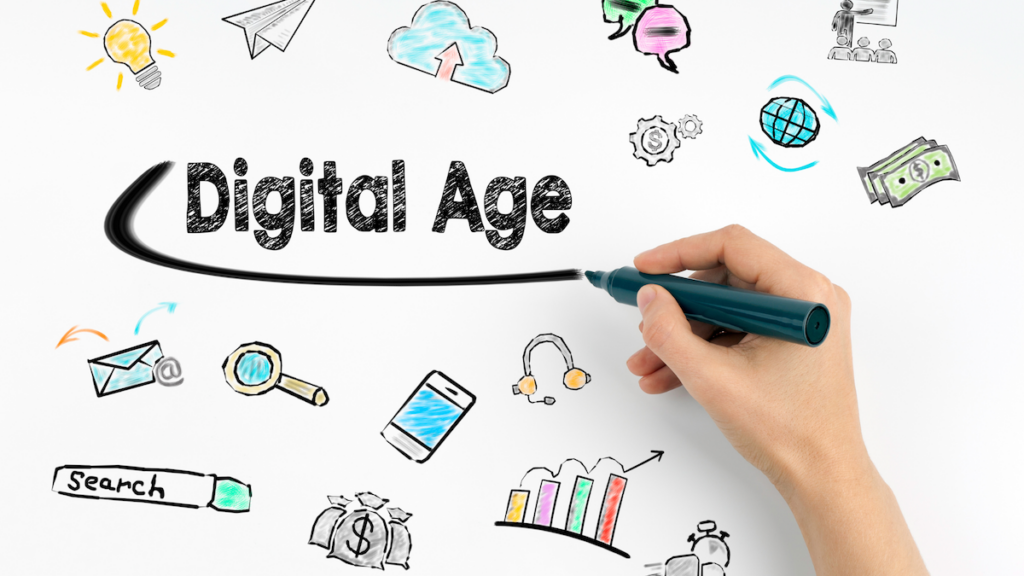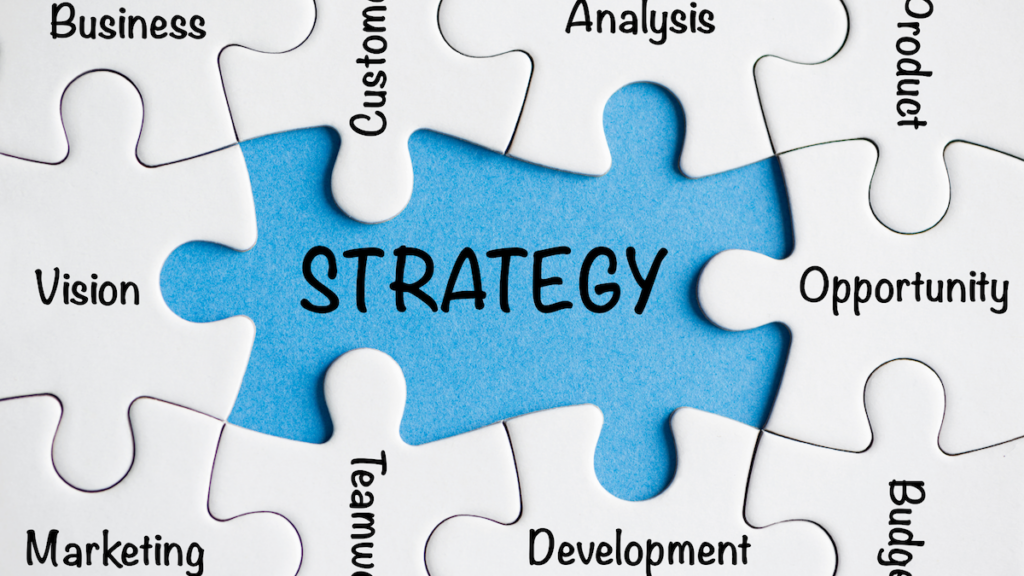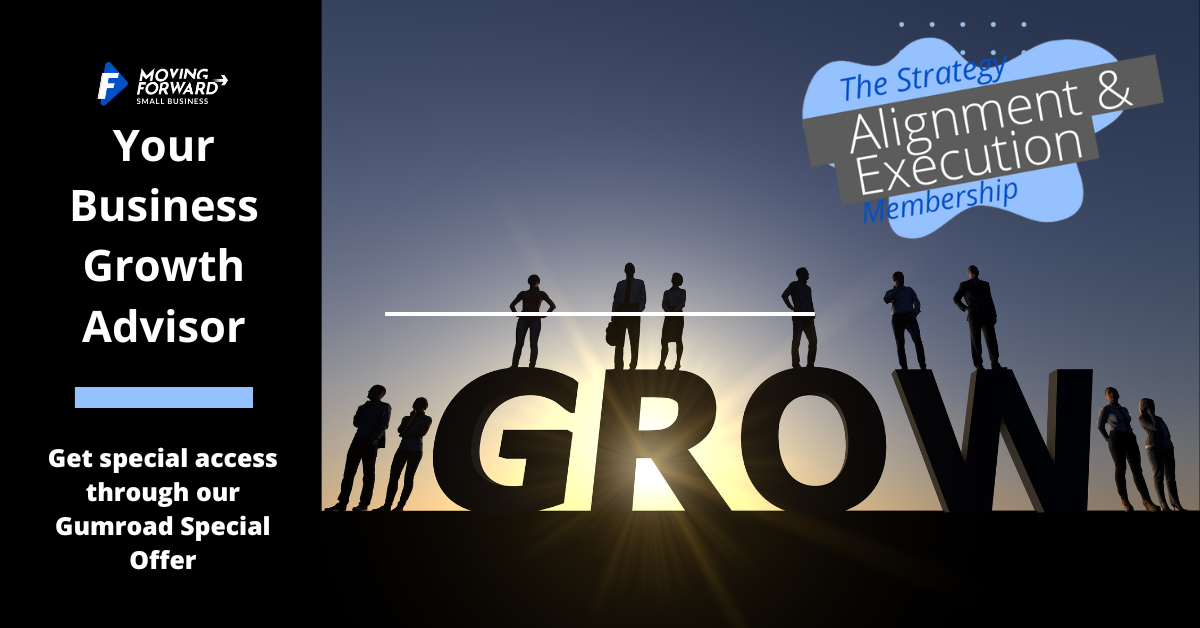Key Highlights
- Earned media is a powerful strategy in digital marketing that can help boost a brand’s reputation, increase word of mouth, and generate social media mentions.
- By understanding and mastering earned media strategies, businesses can significantly enhance their marketing efforts and achieve greater success.
- Key highlights of earning media strategies include developing a strong digital marketing strategy, cultivating a positive brand reputation, leveraging the power of influencer marketing, and encouraging user-generated content.
- With the right strategies in place, businesses can amplify their earned media efforts and reap the benefits of increased brand visibility and credibility.
- Ultimately, mastering earned media strategies can pave the way for long-term success and growth in the digital landscape.
Introduction
In today’s digital age, where information is readily available and consumers have numerous options at their fingertips, brands are constantly searching for effective marketing strategies to stand out from the competition. One such strategy that has gained increasing importance is earned media.
Earned media refers to the organic exposure and publicity a brand receives through its promotional efforts. Unlike paid media, which involves direct financial investment, and owned media, which includes the brand’s own channels such as its website and social media accounts, earned media is generated through word of mouth, positive reviews, media coverage, and social media mentions in various social networks.
In this blog, we will delve into the world of earned media and explore how businesses can master earned media strategies to achieve success in the digital landscape. We will explore the definition and significance of earned media, compare it with other types of media, and discuss the power of earned media in enhancing brand visibility and credibility. Additionally, we will provide key strategies to amplify earned media, challenges in measuring its impact, real-world examples of successful earned media campaigns, and future trends in earned media.
By the end of this blog, you will have a comprehensive understanding of earned media and the strategies to leverage its power for the success of your brand. So, let’s dive in and master earned media strategies for success in the digital age.

Understanding Earned Media in the Digital Age
In the digital age, where consumers are constantly bombarded with information from various sources, understanding the different types of media and their impact on marketing efforts is crucial. Earned media is one such type of media that has gained significant prominence in recent years.
Earned media refers to the organic exposure and publicity that a brand receives through word of mouth, positive reviews, media coverage, and social media mentions. It is different from paid media, where brands invest in advertising space, and owned media, which includes channels that are fully controlled by the brand.
With the rise of digital marketing and the widespread use of social media platforms, earned media has become more influential than ever before. Consumers now have the power to share their opinions and experiences with a wide audience, influencing the perception of a brand. Additionally, search engines play a significant role in determining the visibility of earned media, making it important for brands to optimize their online presence and blog post.
By understanding the different types of media and the role of earned media in the digital landscape, brands can effectively leverage this strategy to enhance their marketing efforts and achieve greater success.
Comparing Earned, Owned, and Paid Media
To understand the significance of earned media, it is important to compare it with owned and paid media. Owned media refers to the digital assets and channels that a brand has full control over, such as its website and social media platforms. It allows brands to curate content and engage with their audience directly. On the other hand, paid media encompasses marketing efforts where you pay to promote your brand, including social media ads and sponsored content. Its purpose extends beyond standalone promotion; it plays a crucial role in generating earned media and driving traffic to your owned media properties.
While owned and paid media provide control and targeted reach, earned media offers the advantage of credibility and authenticity. It is the result of organic buzz and recognition from third-party sources, which enhances a brand’s reputation and increases its visibility through word-of-mouth and social sharing. Examples of earned media include an Instagram mention when someone visits your shop, an unsolicited Yelp review, and even a reshare of your blog post. Unlike owned and paid media, earned media cannot be directly controlled or influenced by the brand. Instead, it is a reflection of the genuine appreciation and positive experiences of customers, influencers, and media outlets. By understanding the differences between these media types, brands can effectively leverage each to maximize their marketing efforts and achieve their desired outcomes.

The Power of Earned Media for Brands
Earned media holds great power for brands in today’s digital landscape. It has the potential to significantly enhance a brand’s visibility, credibility, and reputation. By leveraging the influence of third-party sources, brands can reach a wider audience and foster trust and loyalty among consumers.
One of the key benefits of earned media is its ability to amplify brand visibility. Positive mentions, recommendations, and shares from customers, influencers, and media outlets can significantly increase brand awareness and reach. Additionally, influencers can play a crucial role in amplifying earned media through their authentic endorsements and experiences with a brand.
Earned media also plays a vital role in public relations efforts. Positive media coverage and mentions in reputable publications can strengthen a brand’s reputation and further enhance its visibility and credibility. By strategically positioning their brand to generate earned media, companies can effectively build a positive brand image and establish trust among their target audience.
Enhancing Brand Visibility and Credibility
One of the key aspects of earned media is its ability to enhance brand visibility and credibility. When your brand is mentioned, recommended, or shared by third-party sources, it increases the exposure of your brand to a wider audience. This organic exposure helps to build brand recognition and can lead to increased brand awareness, making it the best part of an earned media strategy.
Additionally, earned media can significantly enhance a brand’s credibility. Positive mentions and endorsements from customers, influencers, and media outlets, such as bloggers, act as social proof, signaling to potential customers that your brand is legitimate and trustworthy. When customers see that others have had positive experiences with your brand, it increases their confidence in your products or services.
To enhance brand visibility and credibility through earned media, it is important to focus on delivering high-quality products and experiences. By consistently providing value and exceeding customer expectations, you can cultivate positive word-of-mouth and generate organic buzz around your brand. It is also crucial to engage with media outlets and influencers who align with your brand values and target audience, particularly in the fast-paced world of tech. Positive press coverage and endorsements from reputable sources can have a significant impact on your brand’s visibility and credibility.
Fostering Trust and Loyalty Among Consumers
Earned media plays a crucial role in fostering trust and loyalty among consumers. When customers see positive mentions and recommendations of your brand from third-party sources, it builds trust in your products or services. This trust is essential for establishing long-term relationships with customers and cultivating brand loyalty.
Positive reviews are a powerful form of earned media that can significantly impact consumer trust and loyalty. When customers share their positive experiences with your brand, it reinforces the credibility and value of your products or services. Positive reviews not only attract new customers but also deepen the connection with existing customers, as they feel validated in their choice to support your brand. Utilizing platforms like Amazon, Facebook, Yelp, TripAdvisor, and your own website to strategically publish these glowing reviews can further foster trust and loyalty among consumers.
By focusing on providing exceptional customer experiences and actively encouraging and promoting positive reviews, you can leverage the power of earned media to foster trust and loyalty among consumers. When customers trust your brand and feel a sense of loyalty, they are more likely to become brand advocates and share their positive experiences with others on social media sites like Facebook. This organic word-of-mouth promotion can have a significant impact on your brand’s growth and success.

Key Strategies to Amplify Earned Media
Amplifying earned media requires strategically integrating it into your overall marketing strategy. By leveraging social media channels, influencer marketing, and other key tactics, you can maximize the impact of earned media and extend its reach to a wider audience.
Social media channels play a crucial role in amplifying earned media. By actively engaging with your audience and encouraging them to share their positive experiences with your brand, you can increase the visibility and reach of your earned media. Implementing a comprehensive social media strategy that focuses on creating shareable content and encouraging user-generated content can help generate organic buzz and amplify your earned media efforts through content marketing.
Influencer marketing is another powerful strategy for amplifying earned media. By collaborating with influencers who align with your brand values and target audience, you can tap into their existing following and leverage their influence to amplify your brand’s message. Influencers can authentically share their experiences with your brand and provide genuine recommendations to their audience, thereby increasing the visibility and credibility of your earned media.
By incorporating these key strategies into marketing efforts, you can effectively amplify your earned media and extend its reach and impact.
Leveraging Social Media for Greater Reach
Social media platforms offer an excellent opportunity to leverage earned media and reach a wider audience. By strategically utilizing social media marketing tactics, you can amplify the impact of your earned media efforts and extend their reach. Here are some key strategies for leveraging social media for greater reach:
- Create shareable content that encourages users to engage and share with their followers.
- Engage with your audience by responding to comments, messages, and mentions.
- Encourage user-generated content by hosting contests or campaigns that encourage users to create content related to your brand.
- Collaborate with influencers who have a large following and can help promote your brand to a wider audience.
- Utilize social media advertising to target specific demographics and increase the visibility of your content.
By incorporating these strategies into your social media marketing efforts, you can effectively leverage earned media and reach a wider audience, maximizing the impact of your brand’s visibility and credibility.
Encouraging User-Generated Content
User-generated content, such as testimonials, is a powerful form of earned media that can significantly enhance your brand’s visibility and credibility. By encouraging your audience to create and share content related to your brand, such as photos, videos, or blog posts, you can tap into their creativity and enthusiasm and amplify your earned media efforts. Here are some effective strategies for encouraging user-generated content:
- Host contests or campaigns that encourage users to create and share content related to your brand.
- Create branded hashtags that users can use when sharing their experiences with your brand.
- Feature user-generated content on your social media platforms and website to showcase the positive experiences of your customers.
- Provide incentives or rewards for users who create and share content related to your brand.
- Engage with users who create and share content related to your brand by liking, commenting, and sharing their posts.
By actively encouraging and promoting user-generated content, you can amplify your earned media efforts and generate organic buzz around your brand. User-generated content serves as social proof and can significantly enhance your brand’s visibility and credibility.
Cultivating Relationships with Influencers and Media
Cultivating relationships with influencers and media outlets is a key strategy for amplifying earned media. By leveraging the influence and reach of these external sources, you can generate buzz and increase the visibility and credibility of your brand. Here are some effective strategies for cultivating relationships with influencers and media:
- Identify influencers who align with your brand values and target audience.
- Reach out to influencers and offer them opportunities to collaborate or experience your products or services.
- Provide influencers with exclusive content or access to your brand to create authentic and engaging content.
- Engage with media outlets and journalists who cover topics related to your brand.
- Offer exclusive news or press releases to media outlets to generate coverage and increase your brand’s visibility.
By cultivating relationships with influencers and media outlets, you can tap into their existing following and leverage their influence to amplify your brand’s message. These relationships can lead to media opportunities, collaborations, and increased visibility for your brand, ultimately enhancing your earned media efforts.

Challenges in Measuring Earned Media’s Impact
Measuring the impact of earned media can be challenging due to its organic and unpredictable nature. Unlike paid media, which can be easily measured through analytics and tracking, earned media relies on mentions, shares, and reviews from third-party sources. Here are some of the challenges in measuring earned media’s impact:
- Unpredictability: Earned media is influenced by external factors and is not directly controlled by the brand, making it difficult to predict and measure its impact.
- Lack of precise metrics: Unlike paid media, there are no precise metrics to measure the impact of earned media. Metrics such as reach, engagement, and sentiment can provide some insights, but they do not provide a complete picture of its effectiveness.
- Integration with other marketing efforts: Earned media often works in conjunction with owned and paid media, making it challenging to isolate its impact and measure it separately.
Despite these challenges, there are strategies and tools available to measure and analyze the impact of earned media. By utilizing analytics and tracking tools, brands can gain insights into the effectiveness of their earned media efforts and optimize their marketing strategies accordingly.
Overcoming the Unpredictability of Earned Media
While the unpredictability of earned media can pose challenges in measuring its impact, there are strategies for overcoming this uncertainty. Here are some ways to navigate the unpredictability of earned media:
- Develop strong relationships with media outlets and influencers who align with your brand values. By cultivating these relationships, you can increase the likelihood of positive coverage and mentions.
- Stay informed about industry trends and news to identify potential opportunities for earned media. Being proactive and responsive to media opportunities can help generate buzz and coverage for your brand.
- Monitor social media and online platforms for mentions and reviews of your brand. This will allow you respond promptly and address any negative feedback or issues that may arise.
- Incorporate earned media into your overall marketing campaigns and strategies. By integrating earned media with owned and paid media efforts, you can create a cohesive and comprehensive marketing approach.
By taking a proactive approach and being adaptable to the ever-changing media landscape, brands can navigate the unpredictability of earned media and leverage its power to enhance their visibility and reputation.
Strategies for Effective Measurement and Analysis
While measuring the impact of earned media can be challenging, there are strategies and tools available to effectively measure and analyze its effectiveness. Here are some strategies for measuring earned media:
- Utilize analytics tools to track and measure key metrics such as reach, engagement, and sentiment. These insights can provide valuable information on the effectiveness of your earned media efforts.
- Employ search engine optimization techniques to track the impact of earned media on your website’s organic search rankings. By monitoring changes in search engine rankings and organic traffic, you can gauge the impact of earned media on your online visibility.
- Implement tracking codes and UTM parameters to measure traffic and conversions generated from earned media sources. These tracking mechanisms allow you to attribute website visits and conversions to specific earned media efforts.
- Use social listening tools to monitor mentions and sentiment about your brand on social media and online platforms. This will help you gauge the overall perception of your brand and identify any potential issues or opportunities for improvement.
By utilizing these measurement and analysis strategies, brands can gain valuable insights into the impact of their earned media efforts and optimize their marketing strategies accordingly.

Real-World Examples of Successful Earned Media Campaigns
Real-world examples of successful earned media campaigns can provide valuable insights into the power and effectiveness of this marketing strategy. By examining these examples, brands can learn from successful campaigns and apply similar tactics to amplify their own earned media efforts. Here are some real-world examples of successful earned media campaigns:
- Airbnb’s “Belong Anywhere” campaign, which focused on showcasing unique and authentic travel experiences, generated significant earned media coverage and helped boost the brand’s visibility and reputation.
- The “Ice Bucket Challenge” campaign, which aimed to raise awareness and funds for ALS research, went viral and generated widespread earned media coverage, resulting in increased donations and public support for the cause.
These examples highlight the impact and reach that earned media campaigns can achieve when strategically executed. By studying these successful campaigns, brands can gain insights into effective media strategies and apply them to their own marketing efforts.
Case Studies Highlighting Innovative Approaches
Case studies highlighting innovative approaches to earned media can offer valuable insights into best practices and strategies for success. By examining these case studies, brands can gain inspiration and learn from the experiences of industry experts. Here are some case studies highlighting innovative approaches to earned media:
- The Dove “Real Beauty” campaign, which aimed to promote body positivity and challenge societal beauty standards, generated significant earned media coverage through its powerful messaging and emotional appeal.
- Nike’s “Dream Crazy” campaign, featuring Colin Kaepernick, sparked widespread conversation and earned media coverage by taking a bold stance on social issues.
These case studies demonstrate the power of innovative approaches to earned media and how they can generate significant buzz and visibility for brands. By studying these case studies, brands can gain insights into successful strategies and apply them to their own earned media campaigns.
Analyzing What Made These Campaigns Stand Out
Analyzing what made these successful earned media campaigns stand out can provide valuable insights into the elements that contributed to their success. By examining their standout features and analyzing their marketing efforts, brands can gain valuable insights into effective strategies for their own campaigns. Here are some key factors that made these campaigns stand out:
- Strong and compelling messaging: These successful campaigns had powerful and compelling messages that resonated with their target audience and sparked conversation.
- Authenticity and emotional appeal: The campaigns were authentic and emotionally appealing, which helped to establish a genuine connection with their audience and generate positive word-of-mouth.
- Bold and impactful storytelling: These campaigns utilized storytelling techniques to create a narrative that captured the attention and interest of their audience.
- Strategic use of influencers and media outlets: The campaigns leveraged the influence of industry experts, influencers, and media outlets to amplify their message and generate earned media coverage.
By analyzing these standout features, brands can gain insights into effective strategies for their own earned media campaigns and create impactful and successful campaigns.

Integrating Earned Media with Other Marketing Efforts
Integrating earned media with other marketing efforts is essential for maximizing its impact and effectiveness. By synergizing earned media with owned and paid media, brands can create a cohesive and comprehensive marketing strategy. Here are some key benefits of integrating earned media with other marketing efforts:
- Maximized reach and impact: Integrating earned, owned, and paid media allows brands to cover a wider range of audience touchpoints, maximizing their reach and impact.
- Increased credibility and trust: Combining earned media’s authenticity with aligned owned media and paid media efforts reinforces a brand’s credibility and fosters trust among customers.
- Optimized marketing ROI: Leveraging earned and owned media in conjunction with paid media aligns marketing efforts towards common goals, leading to higher conversions and improved return on investment (ROI).
By integrating earned media with other marketing efforts, brands can harness its power and create a comprehensive and effective digital strategy.
Synergizing Earned, Owned, and Paid Media for Maximum Impact
Synergizing earned, owned, and paid media is crucial for maximizing their impact and creating a comprehensive marketing campaign. By strategically integrating these media types, brands can achieve maximum visibility and reach while reinforcing their brand messaging and credibility. Here are some key strategies for synergizing earned, owned, and paid media:
- Unify brand messaging: Ensure consistent brand messaging across all media types to reinforce brand identity and values.
- Leverage user-generated content: Amplify user-generated content on owned platforms to enhance credibility and encourage engagement.
- Cross-promote content: Share positive earned media coverage on owned platforms and promote it through paid channels for maximum impact.
- Collaborate with influencers: Collaborate with influencers who align with your brand values and have a strong following to bridge the gap between earned and paid media.
- Measure performance: Use data analytics to track integrated media performance and optimize marketing strategies based on insights.
By synergizing earned, owned, and paid media, brands can create a comprehensive and effective marketing campaign that maximizes visibility, reach, and impact.
Tools and Technologies to Streamline Integration
Streamlining the integration of earned, owned, and paid media can be facilitated by utilizing tools and technologies that automate and optimize these processes. Here are some tools and technologies that can help streamline the integration of media types:
- Content management systems (CMS): CMS platforms provide a centralized hub for creating, managing, and distributing content across owned media channels.
- Social media management tools: These tools allow for efficient scheduling, publishing, and monitoring of social media content, streamlining the integration of owned and earned media efforts.
- Influencer marketing platforms: These platforms provide a streamlined approach to identifying, collaborating with, and managing influencer partnerships, bridging the gap between earned and paid media.
- Analytics and tracking tools: These tools provide insights into the performance of integrated media efforts, allowing for data-driven decision-making and optimization.
By leveraging these tools and technologies, brands can streamline the integration of earned, owned, and paid media, ultimately enhancing their digital marketing strategy and maximizing the impact of their campaigns.

Future Trends in Earned Media
As the digital landscape continues to evolve, several trends are shaping the future of earned media. Brands need to stay updated on these trends to effectively leverage earned media and adapt to changing consumer behavior. Here are some future trends in earned media:
- Continued growth of digital platforms: The rise of social media, streaming services, and other digital platforms will continue to provide new opportunities for brands to generate earned media.
- Shift in consumer behavior: Changing consumer preferences, such as increased reliance on online recommendations and reviews, will shape the future of earned media strategies.
- Technology advancements: Advancements in technology, such as artificial intelligence and virtual reality, will open up new avenues for brands to enhance their earned media efforts.
By staying abreast of these future trends, brands can proactively adapt their earned media strategies and stay ahead of the curve in the ever-evolving digital landscape.
Predictions on the Evolution of Digital Platforms
The evolution of digital platforms will continue to shape the landscape of earned media. Here are some predictions on the future of digital platforms and their impact on earned media:
- Increased focus on video content: Video content will continue to dominate digital platforms, with platforms like YouTube and TikTok leading the way. Brands that leverage video content in their earned media strategies will have a competitive edge.
- Rise of niche social media platforms: Niche social media platforms catering to specific interests and demographics will gain traction, providing brands with targeted opportunities for earned media.
- Integration of augmented reality and virtual reality: Advancements in augmented reality and virtual reality technologies will create new immersive experiences for users and present new avenues for brands to generate earned media.
By understanding these predictions and adapting their earned media strategies accordingly, brands can stay ahead of the curve and effectively leverage the evolving digital platform landscape.
Adapting to Changes in Consumer Behavior
As consumer behavior continues to evolve, brands must adapt their earned media strategies to effectively engage with their target audience. Here are some key considerations for adapting to changes in consumer behavior:
- Increased reliance on online recommendations: As consumers increasingly rely on online recommendations and reviews, brands must actively encourage and leverage positive user-generated content to generate earned media.
- Mobile-first mindset: With the majority of consumers accessing digital content through mobile devices, brands must optimize their earned media efforts for mobile platforms and ensure a seamless mobile user experience.
- Personalization and authenticity: Consumers are gravitating towards personalized and authentic brand experiences. Brands must focus on building genuine connections and delivering personalized content to effectively engage with their target audience.
By staying attuned to changes in consumer behavior and adapting their earned media strategies accordingly, brands can remain relevant and effectively engage with their target audience.
Conclusion
In conclusion, mastering earned media is crucial for brand success in the digital age. It fosters credibility, trust, and loyalty among consumers, enhancing brand visibility. By leveraging social media, encouraging user-generated content, and collaborating with influencers, brands can amplify their reach. Overcoming challenges in measuring impact and integrating earned media with owned and paid efforts are key strategies for maximum impact. Real-world examples showcase innovative approaches that stand out. Embracing future trends and adapting to evolving digital platforms will further boost success. Ready to elevate your brand? Sign up now to unlock the power of earned media and more to propel your brand to new heights! Check out our Strategy Alignment and Execution Membership today!
Frequently Asked Questions
How Do I Start an Earned Media Strategy?
To start an earned media strategy, identify your target audience, create valuable content, and engage with influencers and media outlets that align with your brand. Encourage user-generated content and build relationships with customers to generate positive word-of-mouth.
What Are the Main Challenges in Leveraging Earned Media?
The main challenges in leveraging earned media include the unpredictability of coverage, the lack of direct control, and the need to manage brand reputation. Generating positive coverage and effectively measuring the impact of earned media can also be challenging.
Can Small Businesses Benefit from Earned Media?
Yes, small businesses can benefit from earned media. It provides an opportunity to reach a wider audience, enhance brand credibility, and generate positive word-of-mouth. By leveraging earned media, small businesses can amplify their marketing efforts and establish a strong market presence.
How Does Earned Media Influence SEO?
Earned media can have a significant impact on SEO. Positive mentions and backlinks from reputable sources enhance a brand’s visibility in search results contribute to higher search engine rankings. Quality earned media can increase website traffic and improve overall SEO performance.
What Metrics Should I Track to Measure Earned Media Success?
To measure earned media success, track metrics such as reach, engagement, sentiment, and website traffic generated from earned media sources. Analyze the impact of earned media on brand visibility, credibility, and customer sentiment to effectively measure its success.


